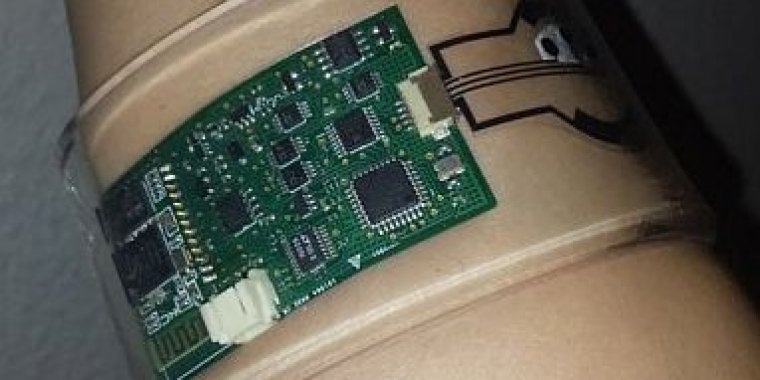| News / Science News |
Diagnosing cystic fibrosis with wearable devices
Cystic fibrosis is the most common fatal genetic disease. It causes the body to produce thick, sticky mucus that clogs the lungs, leads to infection, and blocks the pancreas, which stops digestive enzymes from reaching the intestine where they are required in order to digest food.

A wearable sensor that extracts and analyzes sweat could be a useful device for diagnosing and monitoring diseases. ![]()
Mutations in a single gene, called the Cystic Fibrosis Transmembrane Regulator (CFTR) gene, cause cystic fibrosis. In normal cells, the CFTR protein acts as a channel that allows cells to release chloride and other ions. But in people with cystic fibrosis, this protein is defective and the cells do not release the chloride. The result is an improper salt balance in the cells and thick, sticky mucus.
A “sweat test” that measures the amount of salt in sweat is the standard diagnostic test for those with symptoms. A high salt level (over 60 mM chloride) indicates cystic fibrosis. However, this test requires patients to visit a health care professional and get lab tests.
A team led by Drs. Ronald Davis and Carlos Milla at Stanford University School of Medicine developed a wearable device and tested whether it could measure chloride and sodium levels in patients with cystic fibrosis.
The device was designed to be flexible so it could be worn on the wrist. It contains a wireless, programmable iontophoresis interface, which is placed on a hydrogel containing molecules that stimulate sweat.
The interface periodically applies a gentle electrical current to the gel that drives the sweat-stimulating molecules to the skin’s sweat glands. Electrodes then measure the molecules within the sweat. The data is transmitted wirelessly for analysis.
This device may also be useful for monitoring pre-diabetes and diabetes. However, additional measurements and calibration of the sensors are needed to determine the precise correlation between blood and sweat glucose levels using the device. (NIH)
YOU MAY ALSO LIKE




